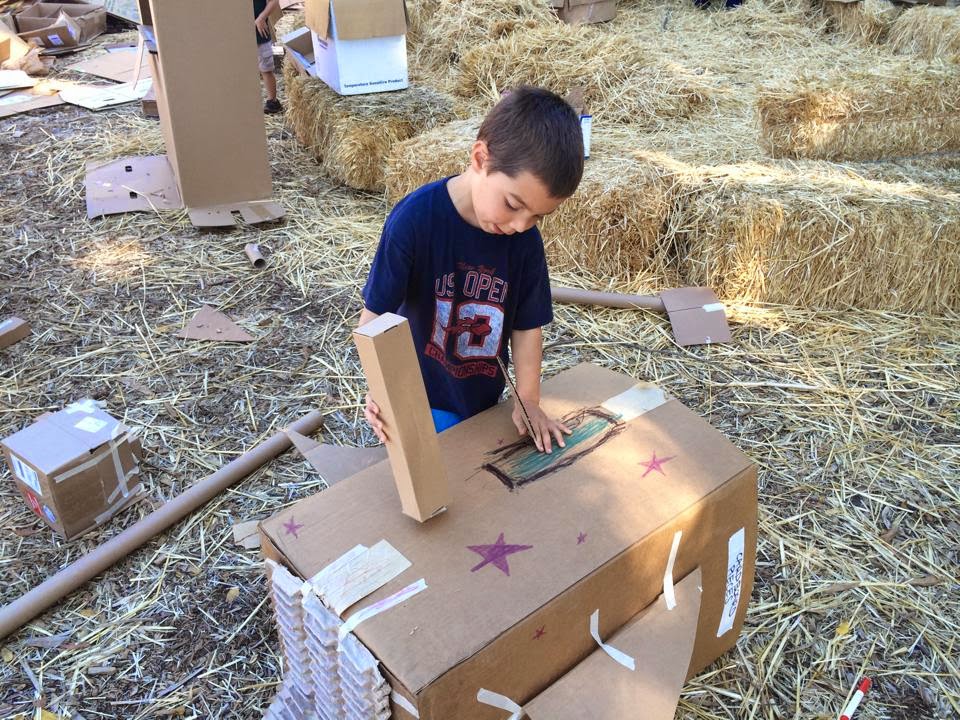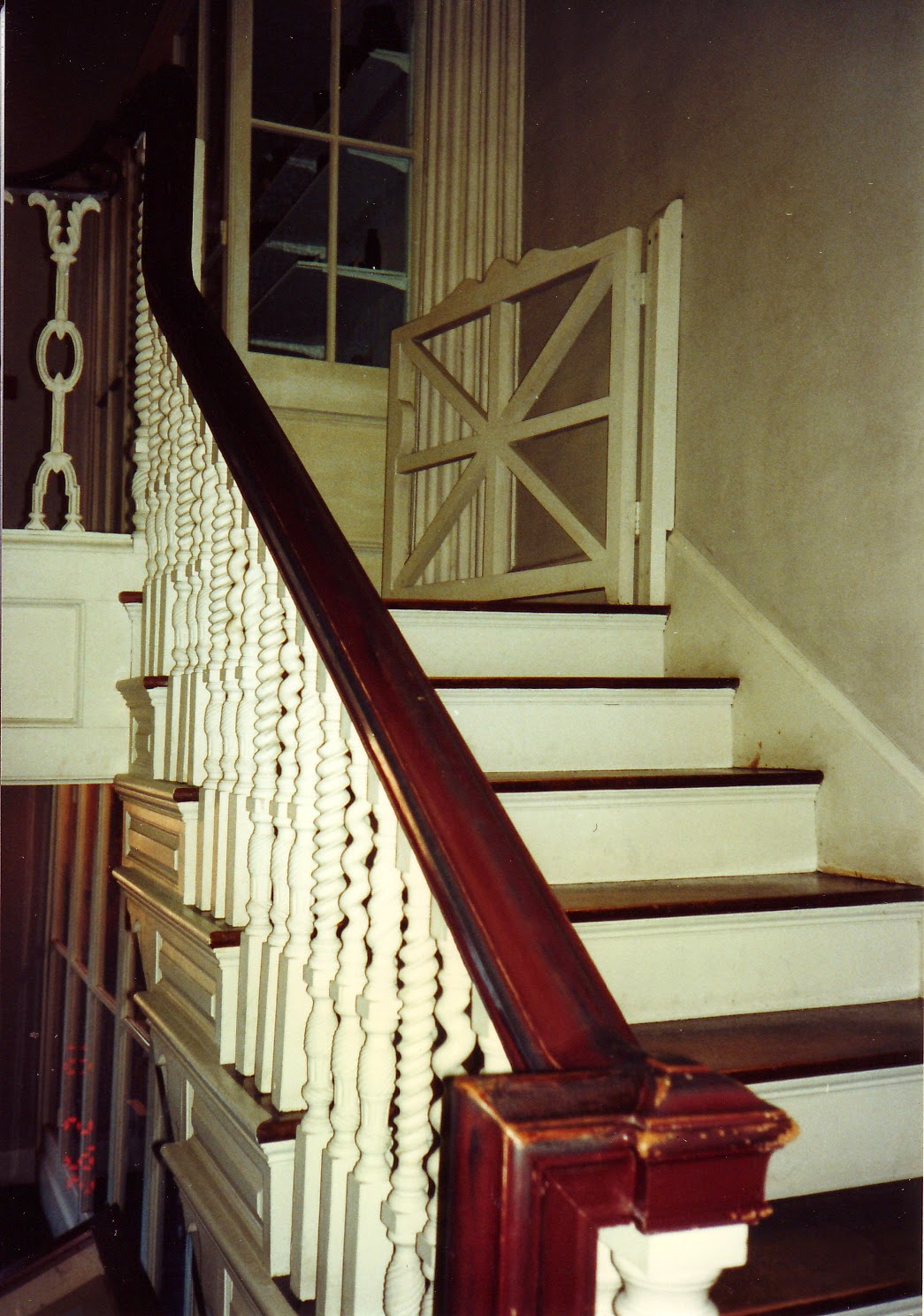Do you recognize these stairs? Note the white gate at the top of each side.
These stairs figured in a recurring nightmare that tormented me in my childhood. I was trapped in a staircase that had white gates across the exits. I didn't believe such a stairway really existed. But over 40 years later, in 1992, I encountered them again and took these photos.
Looking in the display case, I recognized my grandfather's name and picture. He was a supporter of this institution. That gave me the clue of why I'd probably experienced these stairs at a very young age.
For the full story, read my September column about a Recurring Dream: "
Trapped in a gated stairway." This column was published in print September 18, and posted online 10/7/14.
Here is the full text:
Trapped in a gated stairway
By Sandy Nichols Ward
“Help! Help! Let me out!”
I want to scream, but my voice isn’t making a sound. No one is around to hear, anyway. I‘m alone on a staircase, going up and down, seeking a way to escape. I’m in a hurry, rushing with an anxious urgency, but my body feels slow, sluggish. Climbing to the top of the stairs is hard work, and when I get there, a gate blocks my way. I can’t open it. I can’t crawl through it. I try to climb over it, but that is too hard. I turn and go back down the stairs, only to encounter another set of stairs that goes up, and another gate at the end. This is frustrating, maddening. I panic and scramble up and down, frantically seeking a way out of this maze of stairs and gates. There is no way out.
During my childhood in Danvers this dream recurred frequently – always the same stairs, wooden stairs with white spindles (balusters) along the side supporting the railing, white wooden gates blocking the ends. I could see out into a big room or space beyond, but not get there. My rational mind, when awake, rejected this image. Staircases aren’t build that way; they never have locked gates at the top or bottom, I told myself. My mother said that on a tour of the House of Seven Gables, when I was three or younger, I had panicked inside a dark narrow stairway hidden behind a fireplace. I have no memory of that, nor is it relevant to this white, spacious stairway of my recurring nightmare. Eventually, as I grew older, this bad dream ceased. I don’t know when it stopped or why, but eventually I forgot about it.
Forty years, or more, passed. Unexpectedly, suddenly, in October 1992, I again came under the spell of that awful nightmare. Anxiety and dread swept over me. I experienced a visceral feeling of foreboding. My body froze in place, unable to take a step forward. I wasn’t dreaming. I was fully awake, walking from one room to another on the second floor of an old building in Salem. I had driven that morning from my job in western Massachusetts to attend a workshop taught by an Essex Institute librarian; during a break in the workshop, we wandered upstairs to view historic displays and exhibits. I’d often heard my family speak of the Essex Institute, so I was curious to see the place. I had recently moved back to New England after 21 years in California. I was enjoying this workshop and happy to have time to look around. In that relaxed state of mind, I turned a corner to enter a large exhibit hall.
Fear gripped me. An invisible force field held me back. I could not walk into that room. I stood stunned, tears in my eyes, staring at the far end of the room. THAT staircase! Gates at the top, white spindles along the sides, a double staircase going up to mezzanines left and right – EXACTLY as in my childhood nightmare. How could that be possible? Trembling, I backed out and returned the way I had come. I took my place again in the workshop downstairs and tried to resume taking notes, but I was shaking all over. My mind was reeling. What had just happened?
As the workshop proceeded, I calmed down. I resolved to confront that staircase. After the workshop, I walked with determination and confidence towards that grand exhibit hall. This time I had no problem entering the space. I crossed the hall and examined the staircase. I was able to climb up and down the double staircase without any fear.
At the bottom of those stairs was a display case with a photo of William Stanley Nichols, my grandfather, an active supporter of the Essex Institute. Of course I must have come to this building with him, probably when I was very little, so young that I lack conscious memories of it. Perhaps he let me play on the staircase or explore the mezzanines while he talked with people below. Perhaps he almost forgot me there once, or maybe I was so preoccupied in play that I ignored his request to leave. Perhaps, to get my attention, he feigned leaving without me? Granddaddy was a kind gentleman, a retired minister, so I doubt that he actually threatened to leave me there. But I can imagine that if the place were about to close, lights were being flicked off and he happened to be out of my sight, I might have panicked about abandonment, thus providing fodder for my childhood nightmares. I was delighted to discover, at age 49, the source of that old nightmare and to put it to rest.







